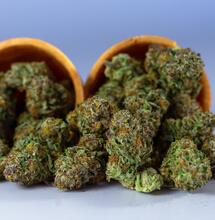Your Rolling Papers Are Probably Contaminated

Every state or country that has legalized the recreational use of cannabis for adults over 21 is also pushing regulations to ensure toxic and pesticide-free marijuana is being sold to customers. But those regulations don’t include your common pot paraphernalia, such as rolling papers, blunt wraps and other products.
According to a recent study done by a California-based testing lab, a number of popular brands of rolling papers are contaminated with heavy metals and pesticides. While the most popular brands are mostly clean, few of them are not. Researchers at SLC Lab spent two months this summer examining around 118 smoking products, including rolling papers, wraps, cellulose rolling papers, and cones bought from various smoke shops around Santa Cruz or were ordered through Amazon. Around 90 percent of the 101 products tested for heavy metal contamination included at least one heavy metal. Heavy metals include mercury, lead, cadmium, and arsenic. According to the SLC lab, the most common metal found in the products was lead. Overexposure to too heavy metals has been linked to neurotoxicity, cancer, and kidney problems in humans, research shows. When it comes to pesticides, 16 percent of the products were registered to have detectable levels, with 5 percent exceeding the allowed level of pesticides under California standards. The good news for smokers who favor paper rolling products is that no brand of rolling papers violated pesticide limits. According to the report, it was the cellulose-based papers—which had “very high levels of contamination.” Cellulose papers made by Smokeclear and aLeda were shown to contain 55.1 and 60.3 micrograms of lead per gram, whilst California has a limit for lead contamination of 0.5 micrograms of lead per gram. Nearly one in ten rolling papers failed the lab standards for purity, as well as eight of twenty tested types of blunt wraps and all three cellulose-based rolling papers. Strangely enough, hemp-based wraps and flavored blunt wraps failed the tests for arsenic, lead and cadmium, the research shows. Hemp-based wraps made by HydroLemonade and Twisted Hamp failed the test as well as Pineapple and blueberry-flavored “cigar cones” made by Zig-Zag. “Heavy metals look to be the bigger issue than pesticides,” and “cellulose papers were the dirtiest” of the rolling papers they tested, said Josh Wurzer, study author and president of SC Labs. Though usually promoted as a more clean and natural option, hemp papers seem to fail mostly because there’s just more of them, Wurzer told Forbes. “They’re thicker, and that seemed to be the issue,” he said. “But that being said, the findings of the study don’t support too much alarm—this certainly isn’t a, ‘Raise the alarm bells now, we have to stop and test all papers.’” When mixed with clean pot, even contaminated rolling papers would create a “clean” product—provided, of course, that they did not fail too badly, like some of the hemp, cellulose, and flavored wraps. The study demonstrates that California did the right thing by requiring final packaged products to undergo testing. “Other states might want to take a look at their requirements,” Wurzer said. “Would I personally completely stop smoking everything in a blunt wrap? No, but I would consider limiting how often I use them,” he said. “If I was smoking three to four joints a day and I always used a blunt wrap, I would reconsider that.” “It seemed like regular old rolling papers were pretty clean,” he added. “Maybe I’d just switch to using those most of the time.” Experts aren’t particularly shocked by the findings, as rolling papers are made of plants (like cannabis) that absorb contaminants directly from the soil. Paper crops also include pesticides to deter pests and insects. A $1.2 billion dollar global industry, rolling papers is less regulated than other segments of the cannabis industries. All in all, the study’s results confirm that most commercial rolling paper products are not exactly clean. They either contain heavy metals or pesticides.



